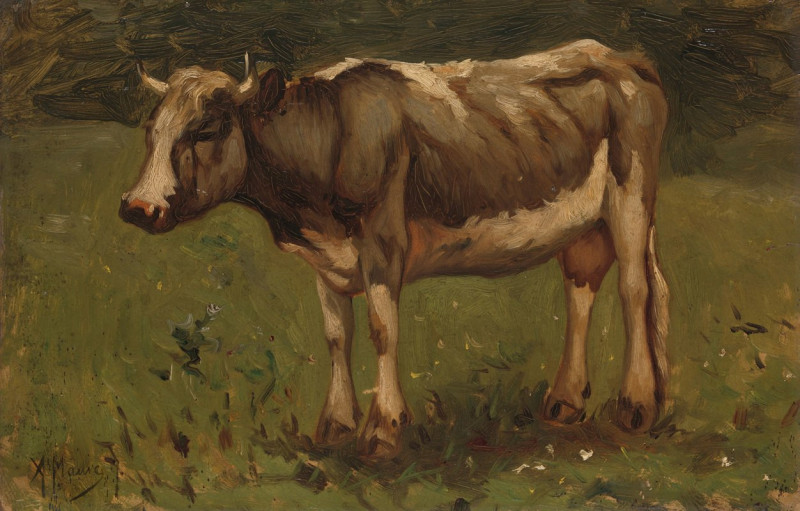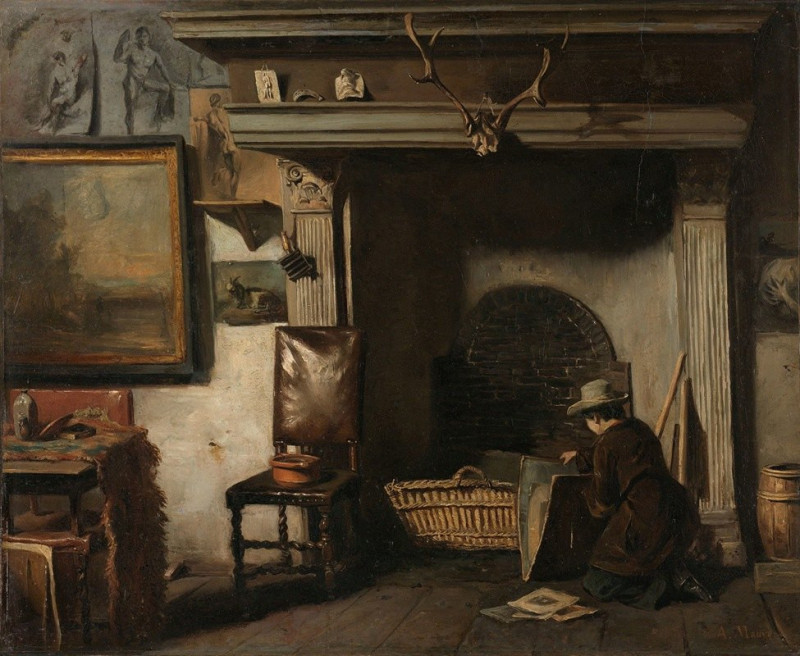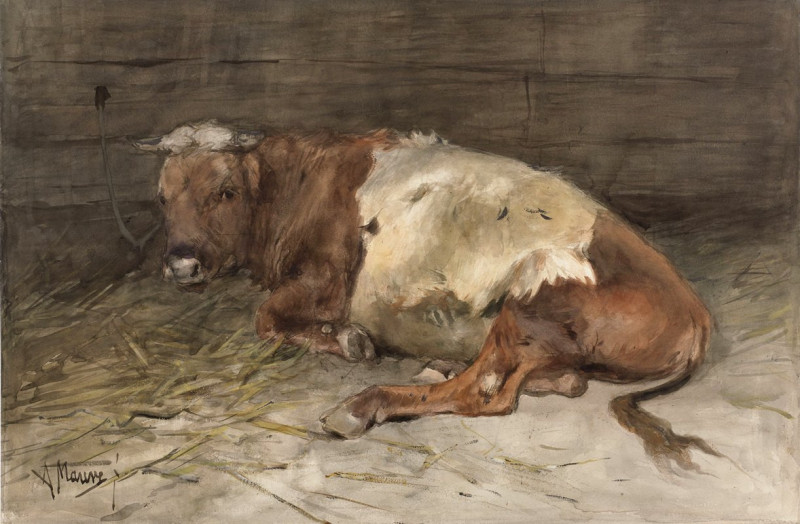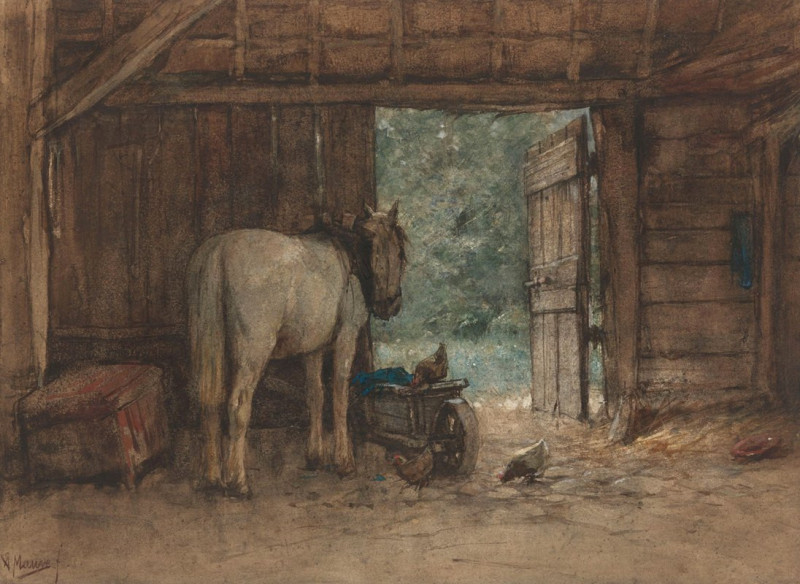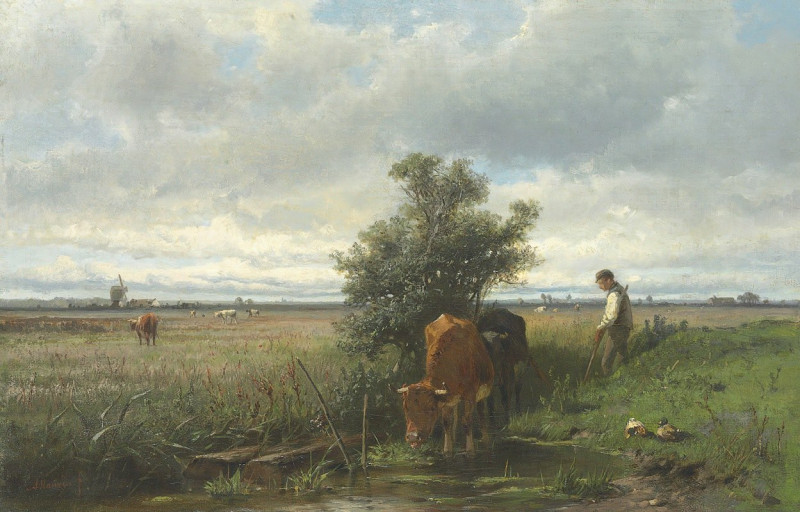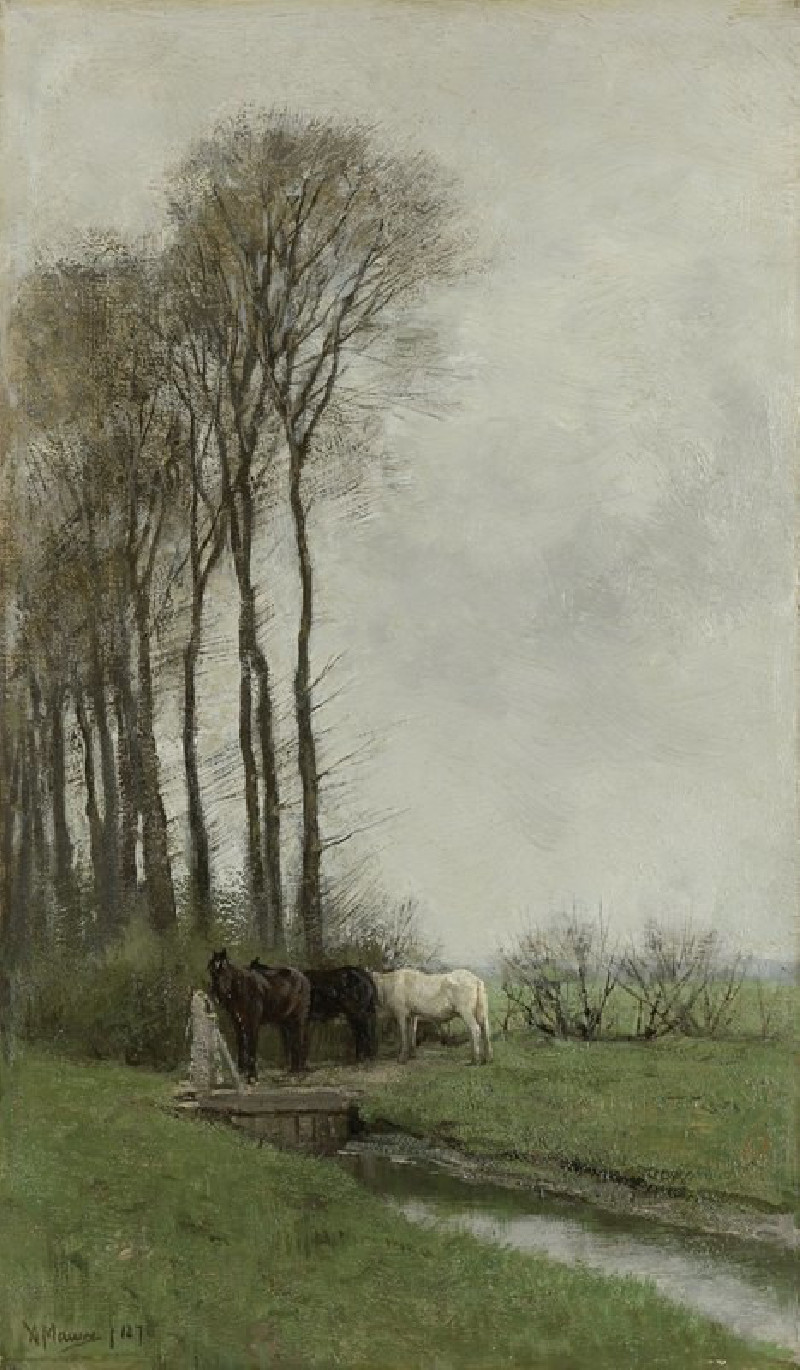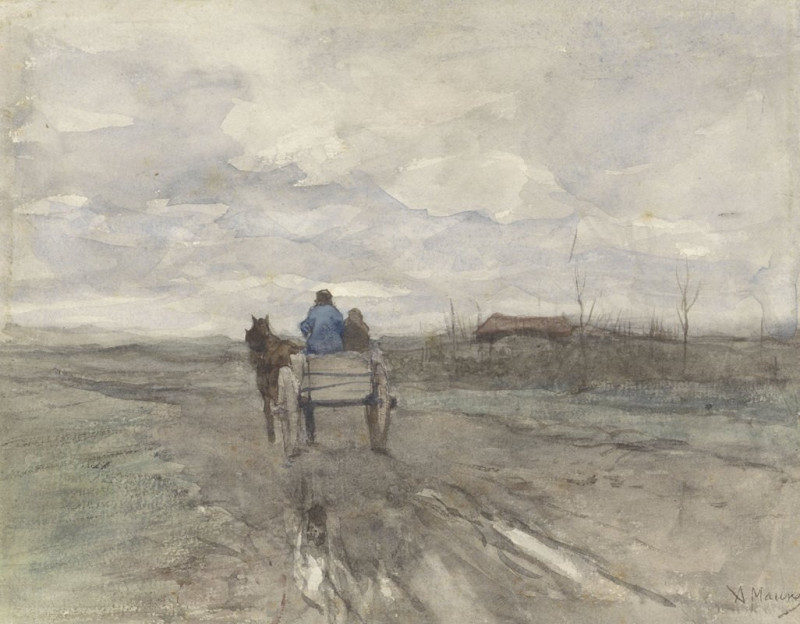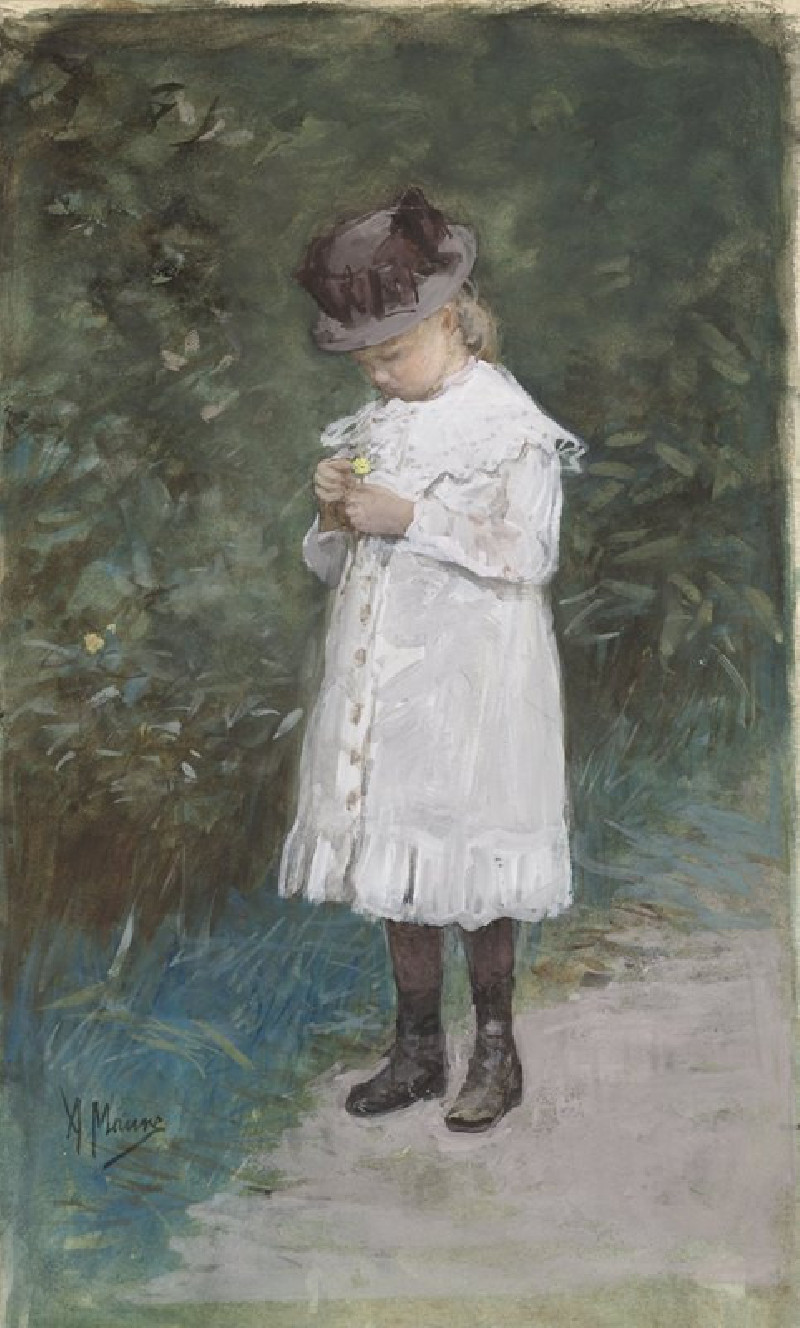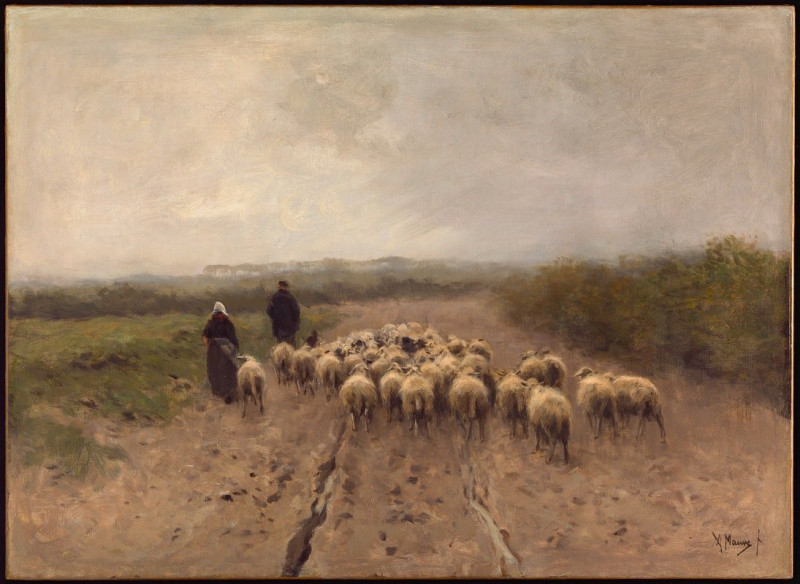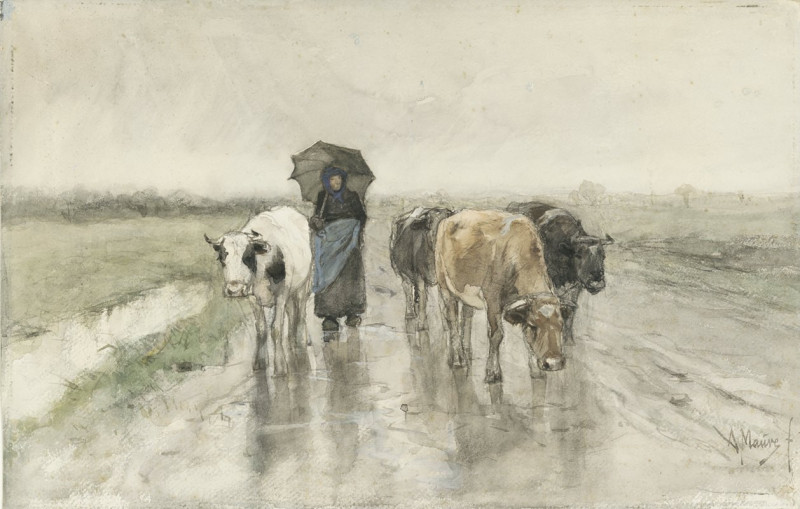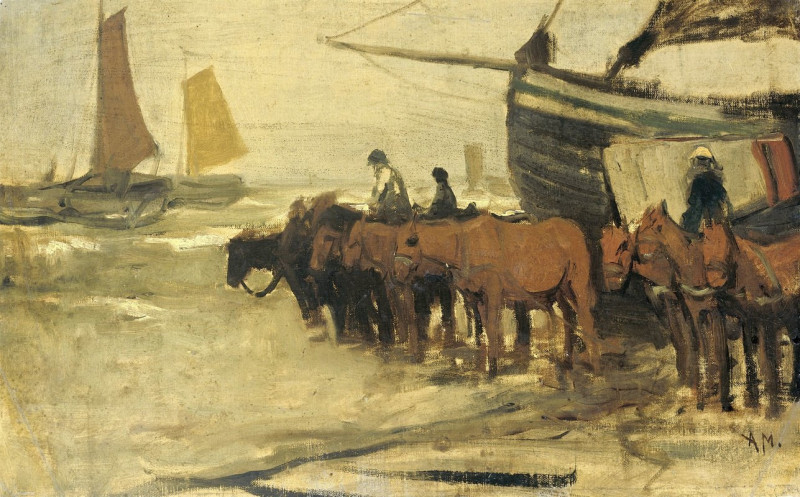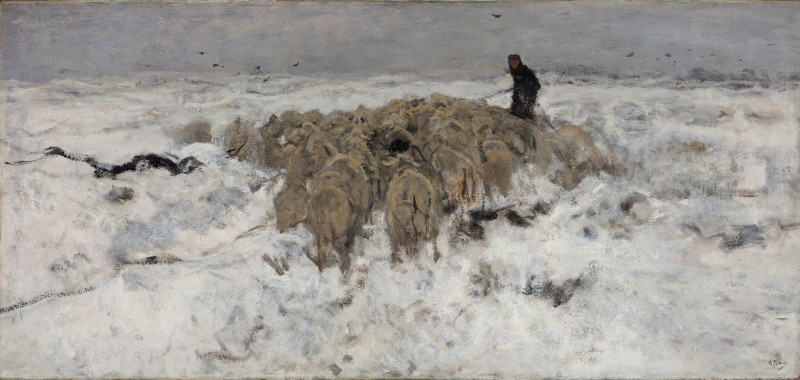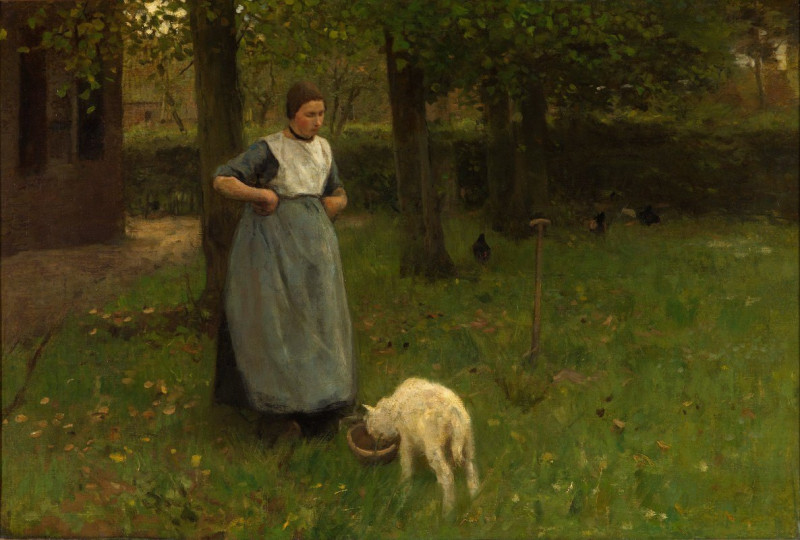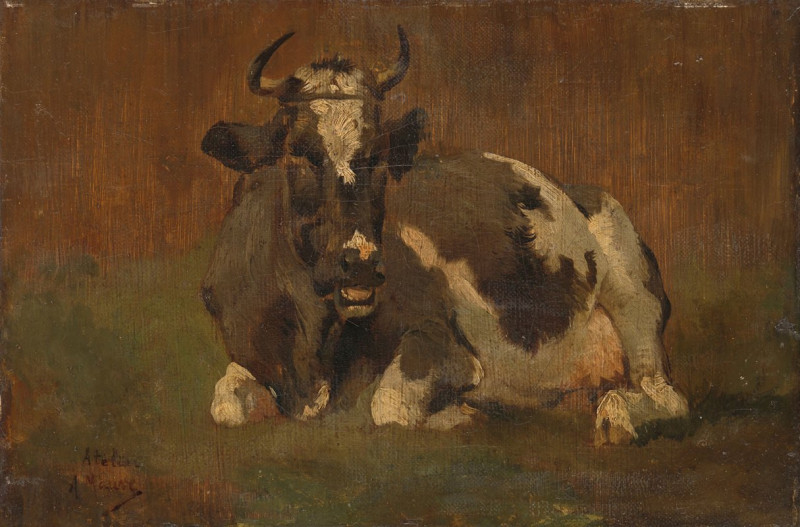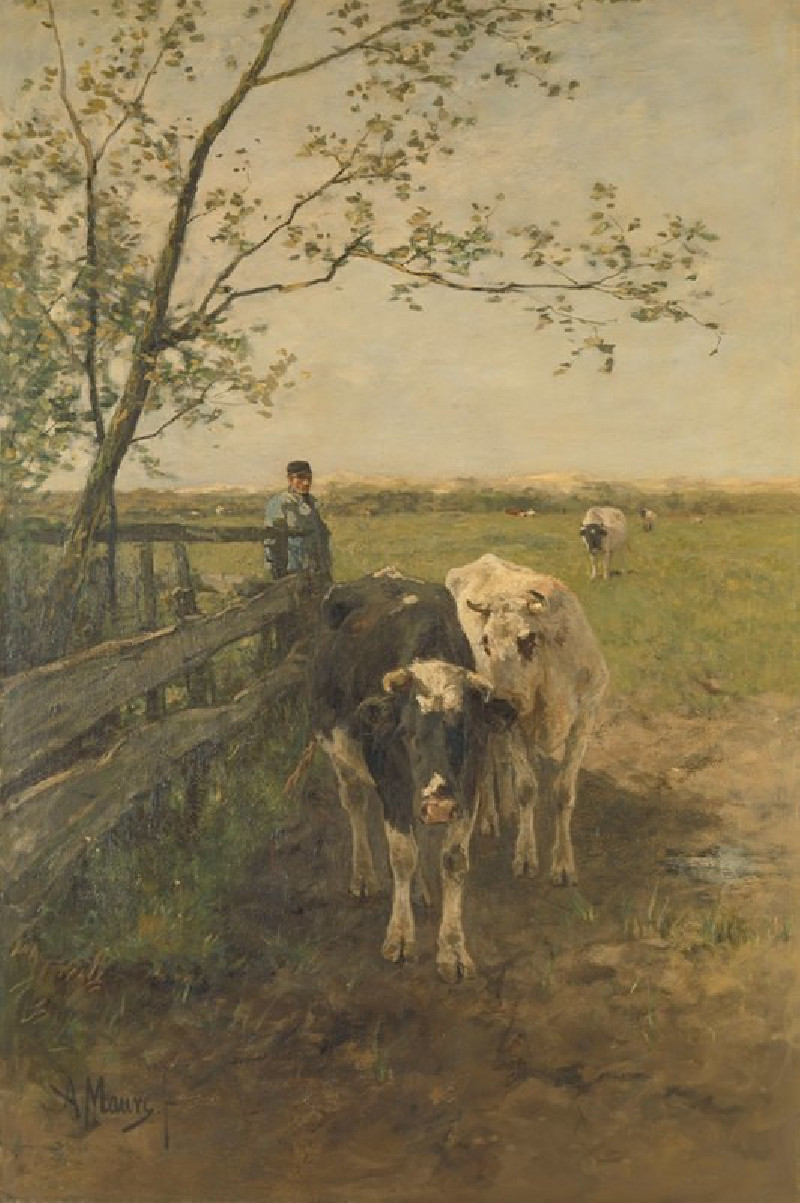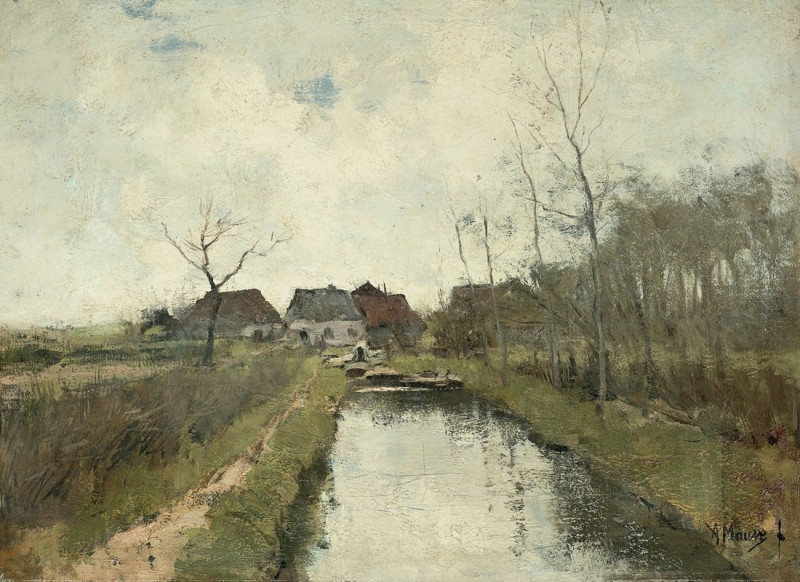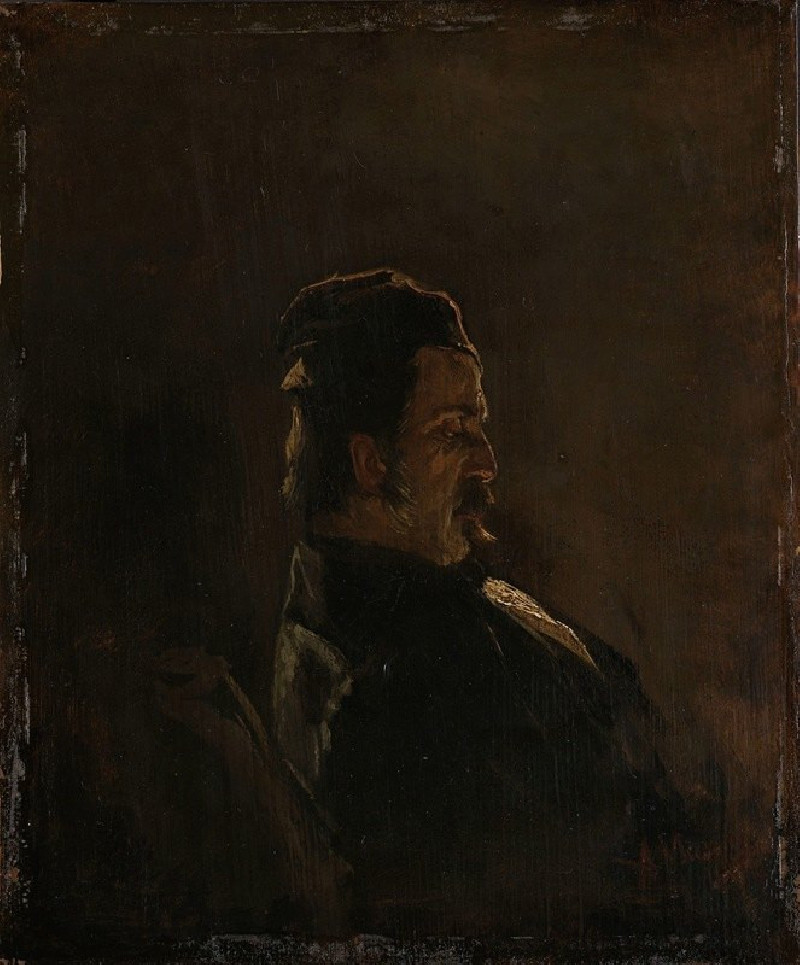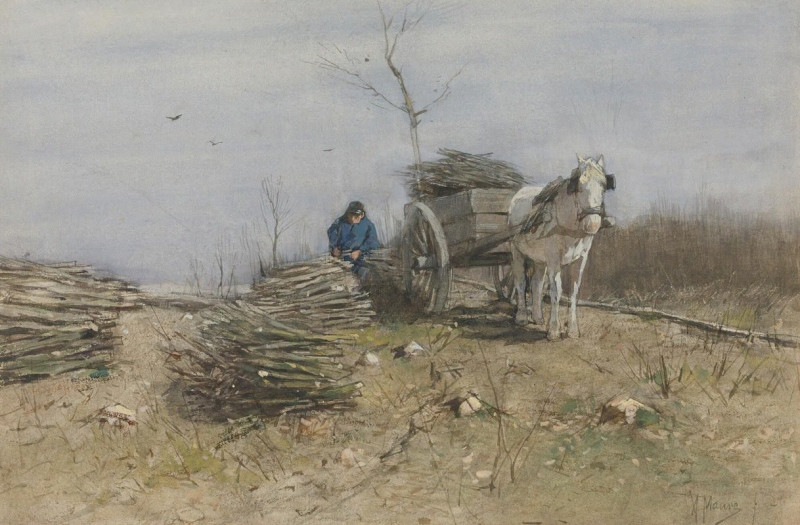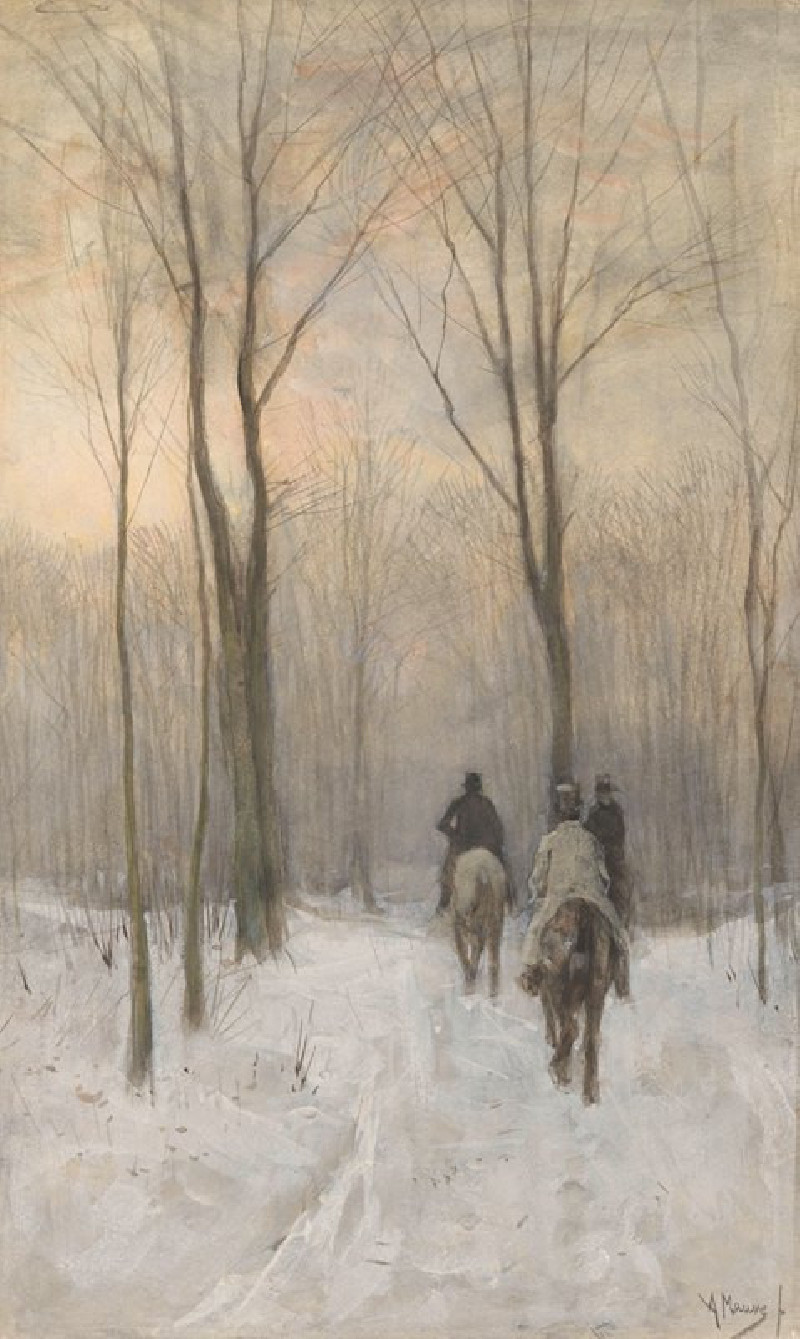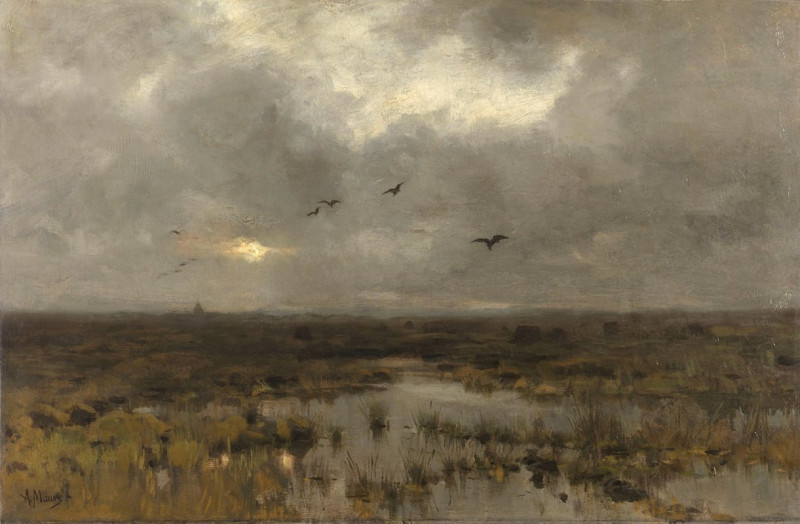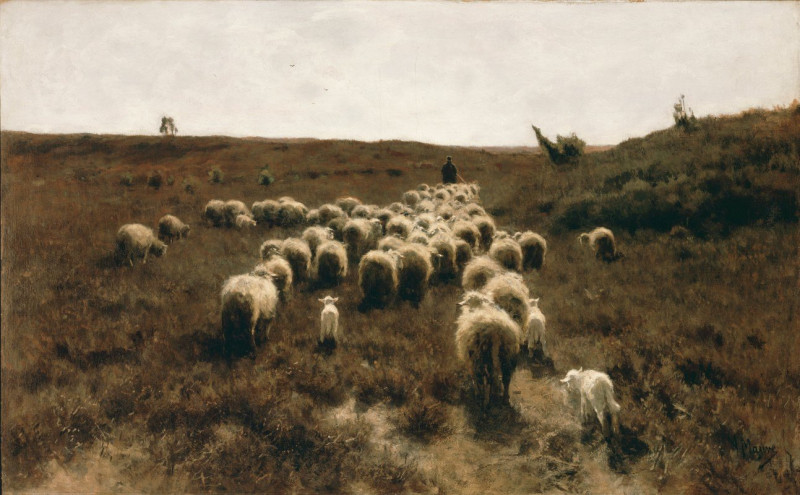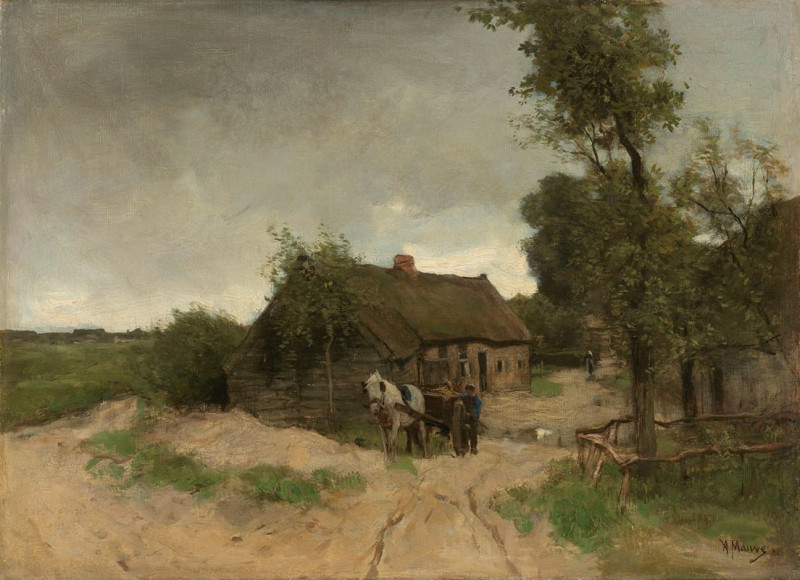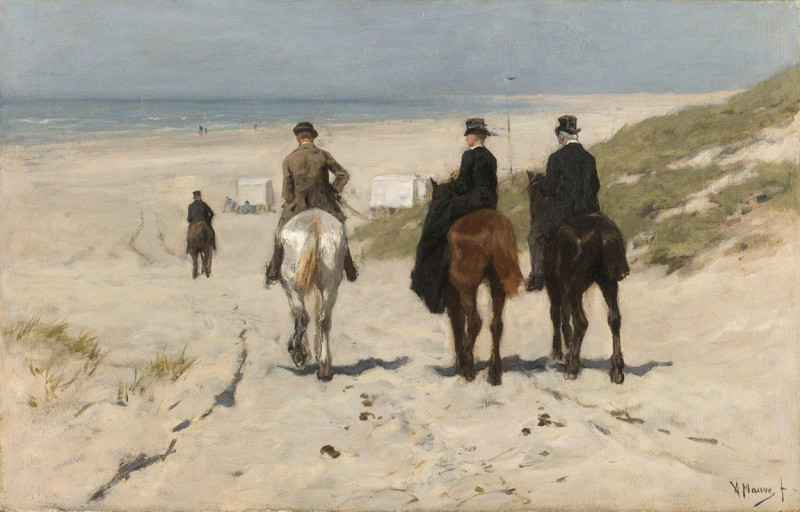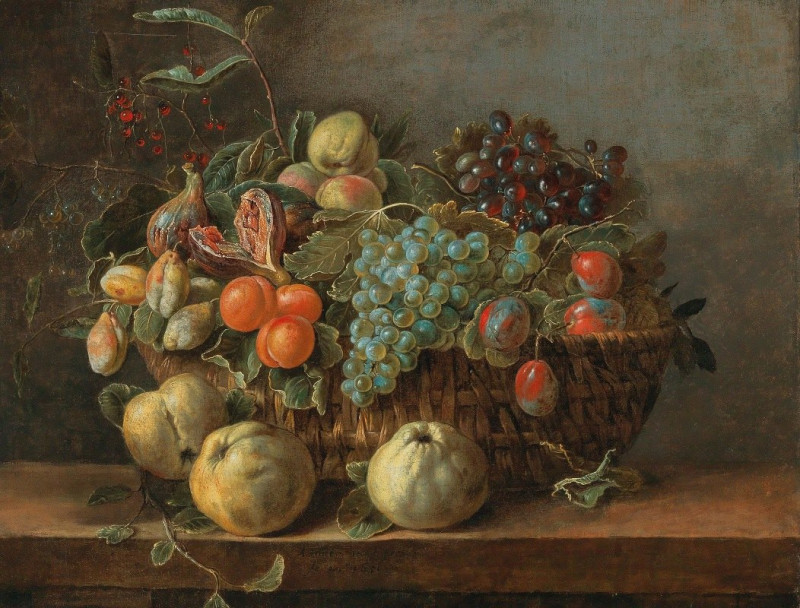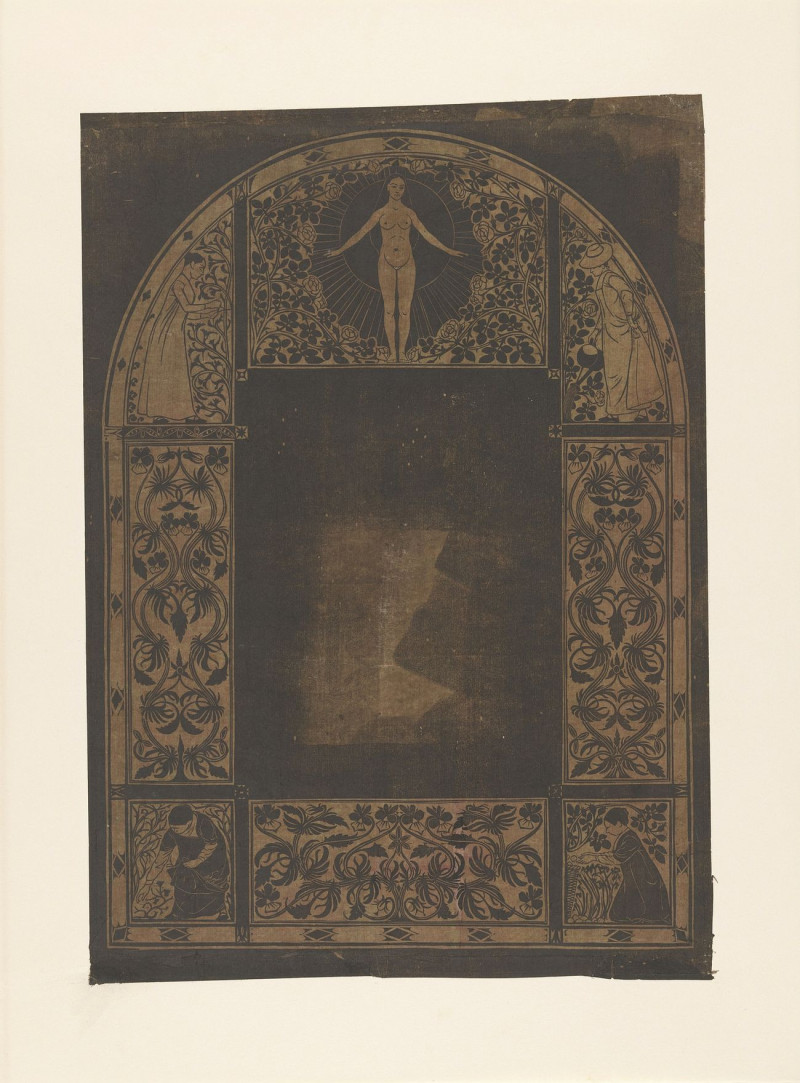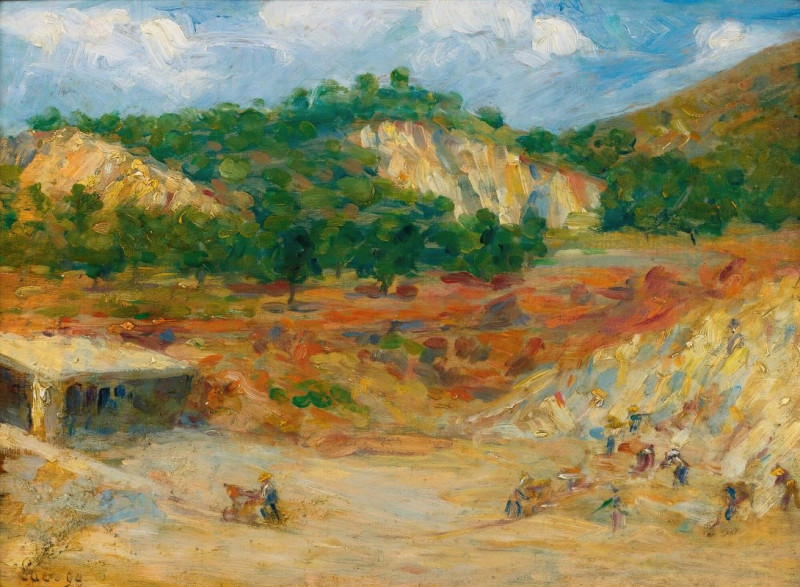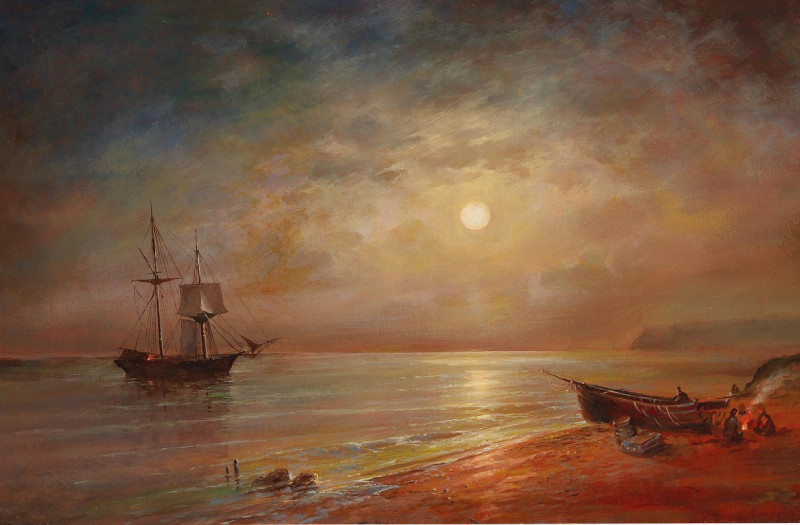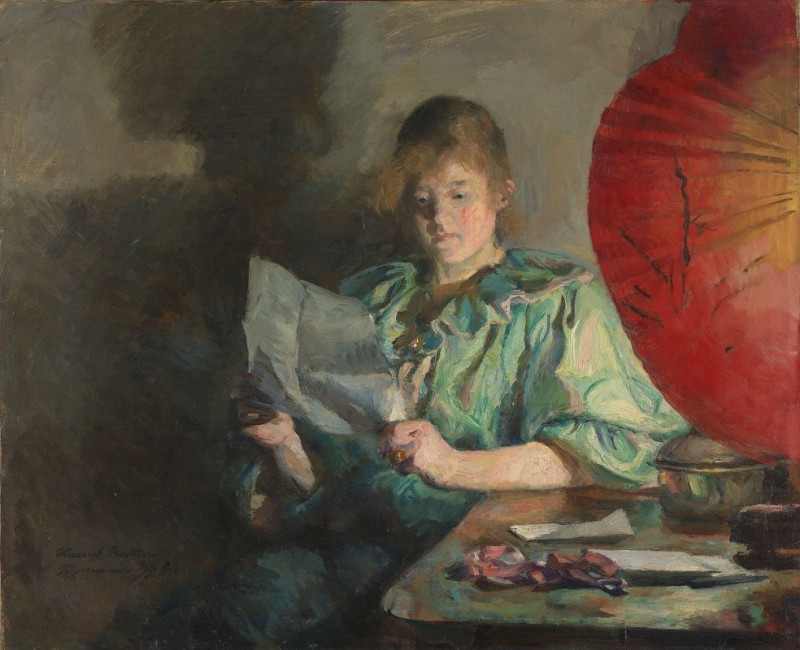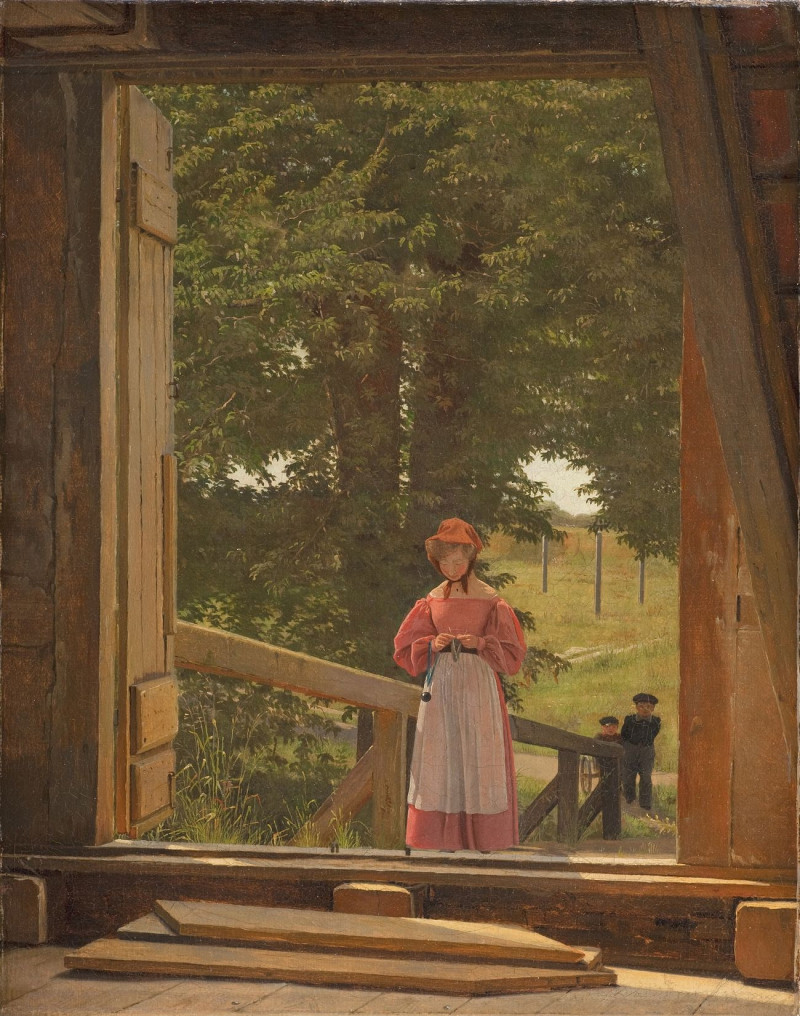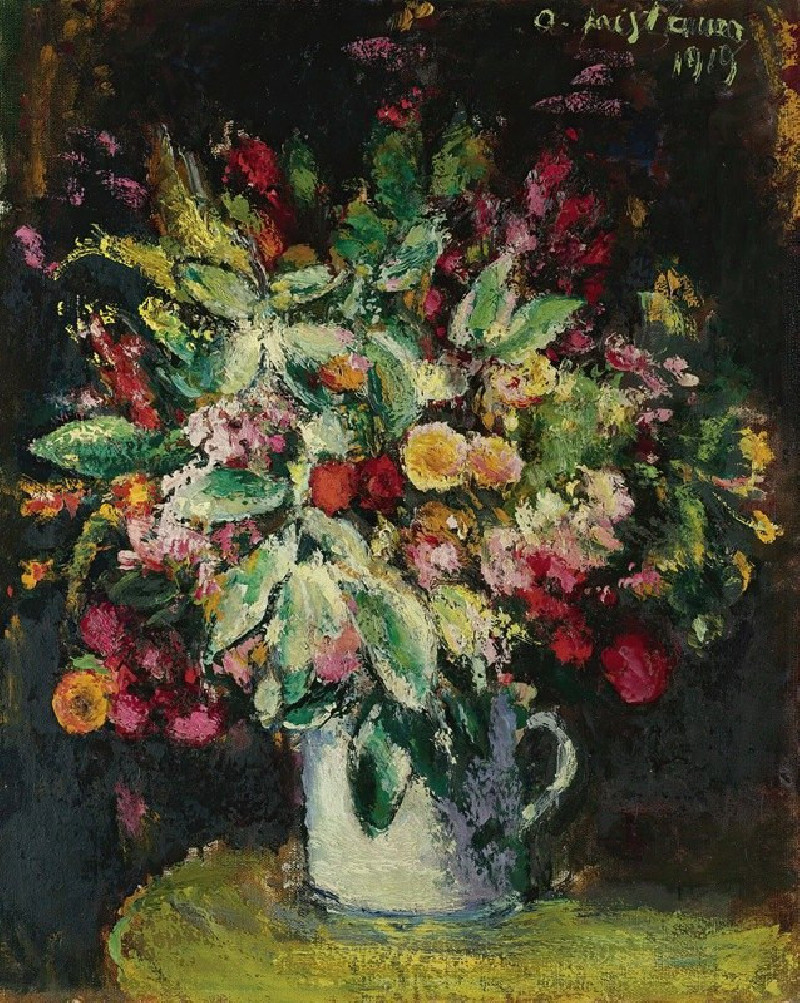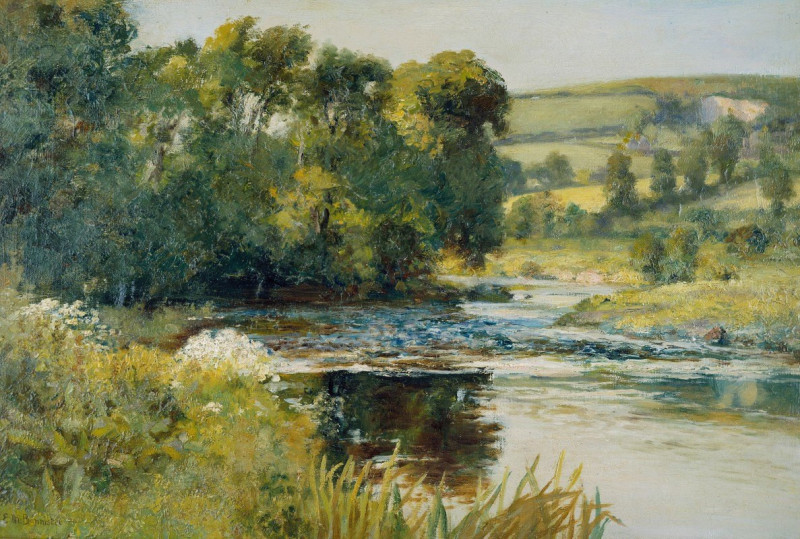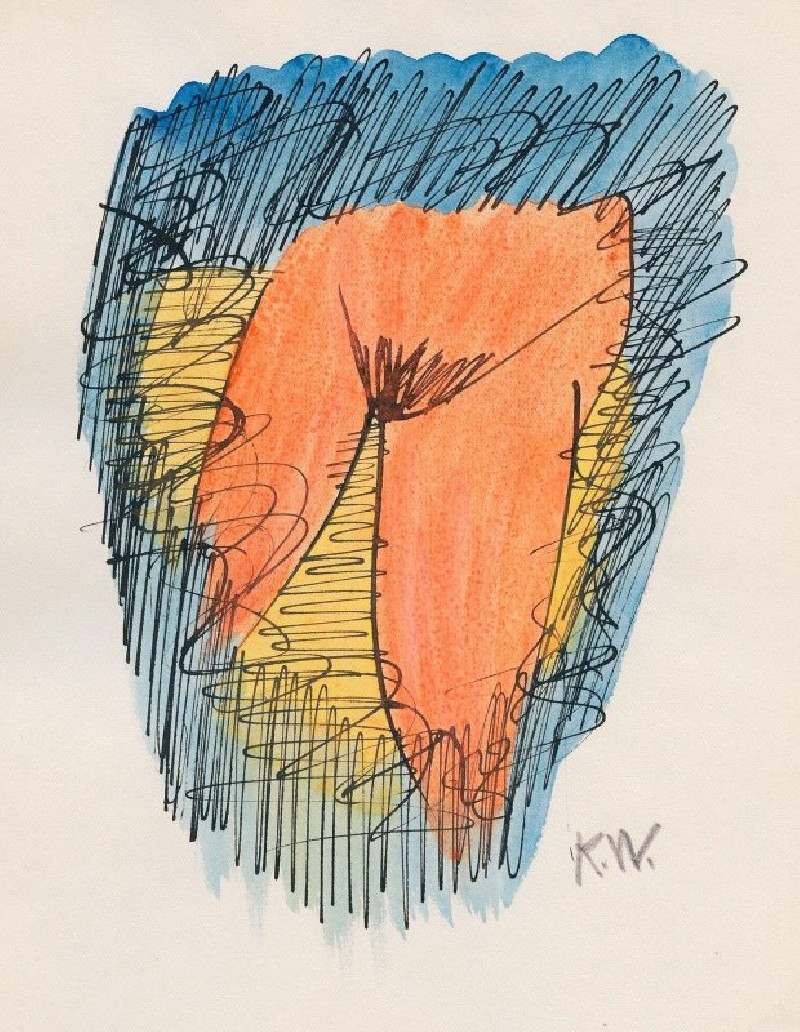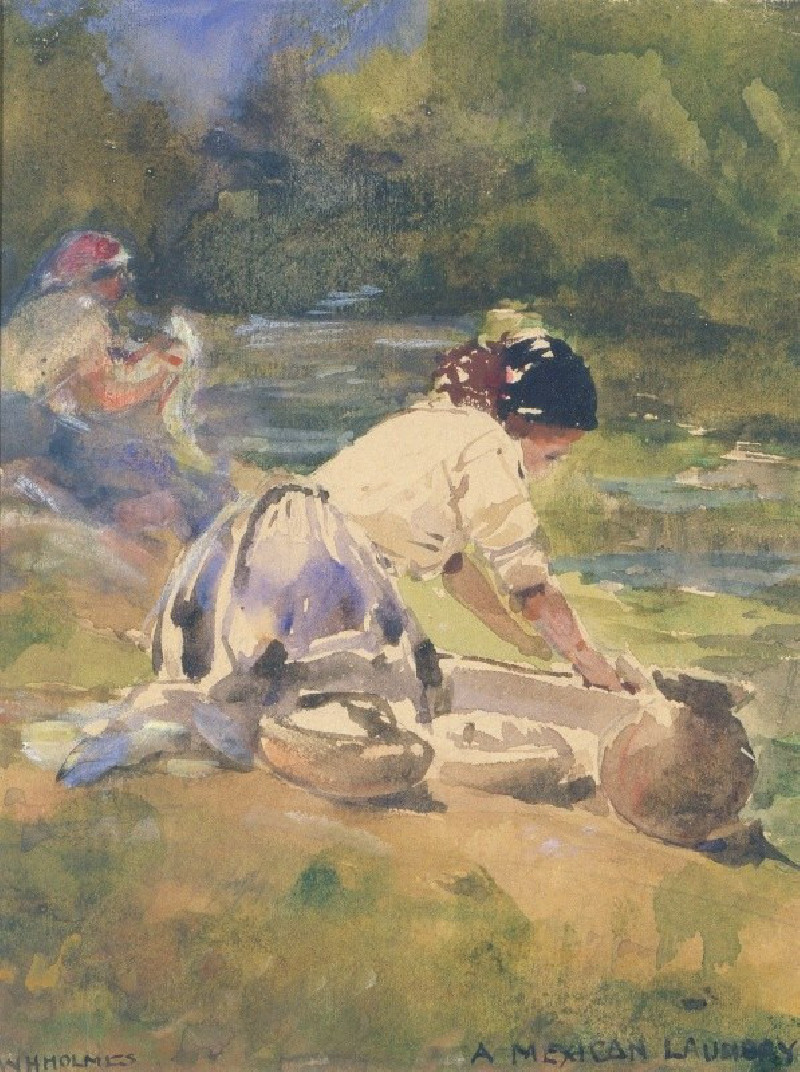Bosrand aan het water (1848 - 1888)
Technique: Giclée quality print
Recommended by our customers
More about this artwork
"Bosrand aan het water" (English: Edge of the Forest by the Water), created by the renowned Dutch artist Anton Mauve between 1848 and 1888, exemplifies the tranquil beauty characteristic of his work. In this evocative watercolor painting, Mauve captures a serene landscape scene set at the edge of a wooded area beside a reflective, calm body of water.The focal point of the composition is a small, rickety wooden boat resting ashore, which draws the viewer's eye towards a lone figure engaged in perhaps fixing the boat or preparing it for use. Accompanied by a dog, this figure enhances the narrative of daily rustic life, subtly blending human activity with the stillness of nature. The tall, slender trees frame the scene, their bare branches sprawling against a muted, overcast sky, suggesting the season might be either late autumn or early winter.Mauve's mastery in handling light and shadow is apparent as he employs a soft, diffused light that permeates through the trees, reflecting off the water and giving the painting a moist, atmospheric quality. The subtle gradations of grey and brown tones contribute to the overall feeling of peaceful solitude.This work not only highlights Mauve's skill as a painter of rural themes but also his ability to invoke emotion and contemplation through his art.
Delivery
Returns
Anthonij "Anton" Rudolf Mauve (18 September 1838 – 5 February 1888) was a Dutch realist painter who was a leading member of the Hague School. He signed his paintings 'A. Mauve' or with a monogrammed 'A.M.'. A master colorist, he was a very significant early influence on his cousin-in-law Vincent van Gogh.
His best-known paintings depict peasants working in the fields. His paintings of flocks of sheep were especially popular with American patrons, so popular that a price differential developed between scenes of "sheep coming" and "sheep going".



